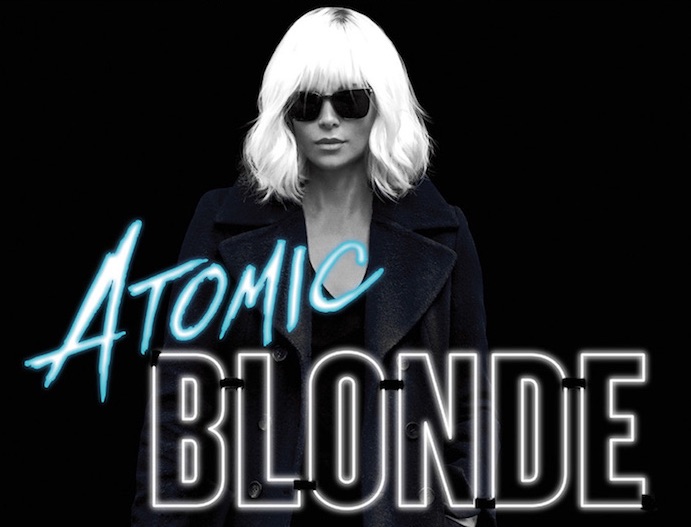
Atomic Blonde: The Coldest City
Writer: Antony Johnston
Artist: Sam Hart
Publisher: Oni Press
Review by John Dubrawa
 By now you’ve probably seen the trailer for Atomic Blonde, the espionage-thriller-meets-action-film starring Charlize Theron that looks like what would happen if James Bond were trained by John Wick. You might not know this, but the film is actually an adaptation of Antony Johnston’s graphic novel The Coldest City, originally released in 2012 that is wisely not only being re-released by Oni Press in time for the movie but renamed as well. Atomic Blonde: The Coldest City may be a bit of a mouthful of a title but it’s simply a new marketing-friendly package wrapped around the same great engrossing spy thriller.
By now you’ve probably seen the trailer for Atomic Blonde, the espionage-thriller-meets-action-film starring Charlize Theron that looks like what would happen if James Bond were trained by John Wick. You might not know this, but the film is actually an adaptation of Antony Johnston’s graphic novel The Coldest City, originally released in 2012 that is wisely not only being re-released by Oni Press in time for the movie but renamed as well. Atomic Blonde: The Coldest City may be a bit of a mouthful of a title but it’s simply a new marketing-friendly package wrapped around the same great engrossing spy thriller.
[Just a word of warning to potential readers, however: though I have not seen the film, Atomic Blonde looks to be a pretty faithful adaptation of Johnston’s story here, so while I won’t spoil any of the plots twists or turns in this review, reading the actual graphic novel may potentially spoil the movie. It’s an obvious risk any reader takes when reading the source material before a film adaptation, I know, but it’s worth noting because there is plenty to spoil.]
From the start, Johnston weaves an intriguing whodunnit around a global espionage tale centered on Lorraine Broughton, a MI6 agent on a mission to locate a sensitive piece of plot McGuffin from a murdered compatriot. Contrary to what the highly-stylized Atomic Blonde trailer will have you believe, Johnson’s story is not so much James Bond or John Wick adjacent; rather it plays out like a highly tense John Le Carre novel. It’s a slow burner, for sure, with a lot of players and codenames being tossed in and out of the plot, which can cause a lot of confusion in the maelstrom of it all. Broughton remains our center through it all, however, a strong-willed and determined protagonist that, through intercut scenes of her being interrogated after the fact, is playing just as many games as those around her. And most of the time doing it a hell of a lot better.
Whereas Johnston’s narrative is very much rooted in spy thriller novels, the art of Atomic Blonde: Coldest City from Sam Hart has a very noir taste to it. Hart uses merely inks and negative space to create each panel, which both absolutely works in conveying the morally black-and-white world that the story operates in but also creates unnecessary confusion from time to time. As I said before, this is a complicated tale; Johnston’s characters take on codenames, aliases, and disguises quite frequently, and with Hart’s very minimalist renderings, it can be difficult to tell which characters are in a given scene at a time. There’s one sequence during a heated protest at the Berlin Wall where I thought a main character was eliminated by a sniper, only to realize it was just a miscellaneous face in the crowd who happened to look extremely similar. Hart does give the book a very distinct look, but it’s a style that may not necessarily gel with readers who are desperate for more grounded visuals.
Verdict
Check It Out! Atomic Blonde: The Coldest City is an intriguing Cold War-era spy thriller that involves double-crossing, moles working from within, and shady dealings. You know, the kind of spy thriller stuff that makes spy thrillers so awesome. That all being said, this is not going to be a graphic novel every reader is going to be able to fall into rather easily. It’s a dense narrative that’s made a touch more difficult to fully engage with due to Sam Hart’s unique visual style. It’s a suitable look for the story, but one that gives me pause in fully recommending this graphic novel to everyone.



